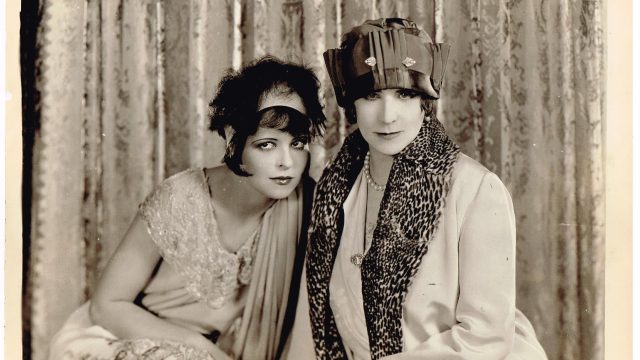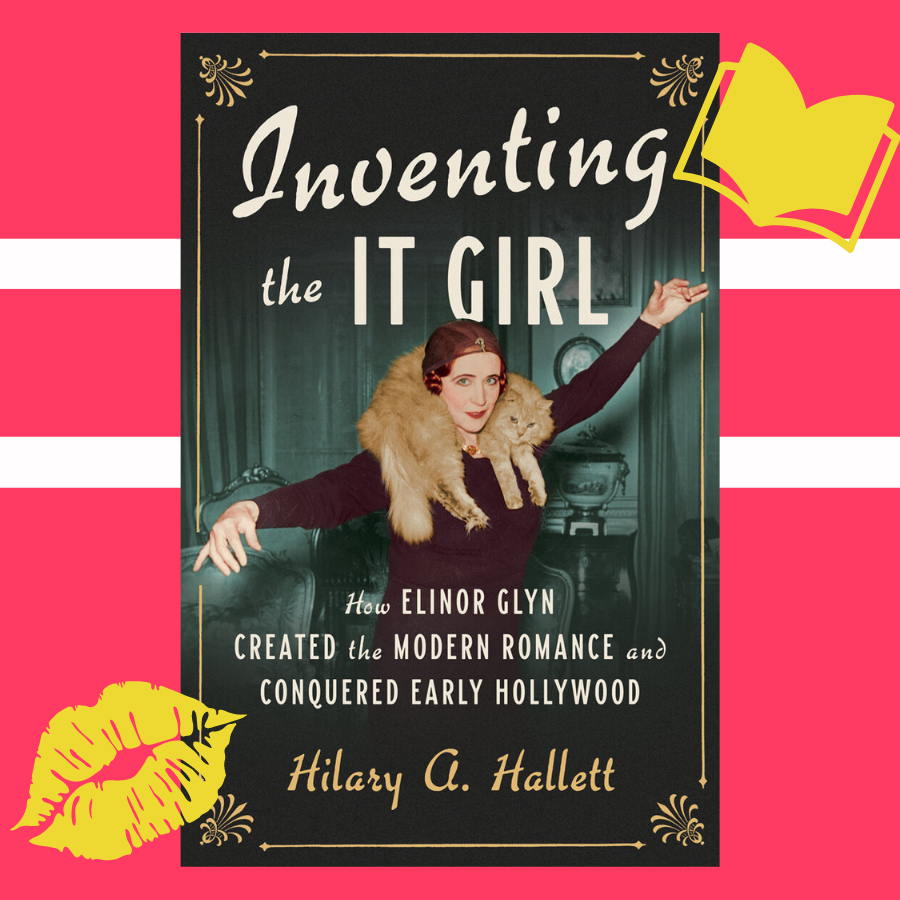I had never heard of Elinor Glyn when I first saw Hilary A. Hallett’s biography of her. I’m a sucker for early Hollywood history, and when I saw that beautiful orange cat draped around that extravagant red-headed woman on the book’s cover, I knew I needed to learn about her.
Inventing the It Girl: How Elinor Glyn Created the Modern Romance and Conquered Early Hollywood is the first biography I’ve read in a while. I was engrossed not only by the deep dives into Glyn’s fascinating upbringing and personal life but also by Hallett’s discussions of everything from nineteenth-century London high society to the disturbing history of childbirth (um, did you know midwives used to get licensed by the Church to ensure their ability to administer last rites?) to the frustrating uncertainty of 1920s Hollywood.
Elinor Glyn, known as “Nell” to her friends and called this throughout the book, was born in the 1860s in the United Kingdom. She also lived in Paris and later found a home in Hollywood before returning to London. Nell’s life as a society-girl-turned-author-turned-screenwriter started under the reign of Queen Victoria, progressed alongside the first cars, telephones, and airplanes, and overlapped with two world wars. Hallett had a lot to write about. In Inventing the It Girl, she achieves a perfect balance between the personal and societal narratives that intertwine throughout Nell’s life and legacy.
Nell is known for writing the first “sex novel” (Three Weeks) and for being a prolific “authoress” of female-led stories inspired by her experiences in both British and French high societies. Her first book, The Visits of Elizabeth, was one of the first novels ever marketed as a “bestseller,” which was a new term at the time. In America, she wrote for Cosmopolitan and eventually turned to screenwriting, producing, and directing. She had a pivotal role in making Clara Bow a Hollywood star. Bow starred in Nell’s movie It, ushering in the idea of “the it girl” — and its accompanying allure of glamour — for decades to come.

Hallett writes with the authoritative voice you’d expect in a biography, but not without personality and her own brand of subtle, snarky humor. She makes sharp observations about the intersections of Nell’s romantic, cultural, and career experiences as a woman at the turn of the century. Once I got into the flow of Hallett’s writing, I began eagerly awaiting Hallett’s presence in the narrative through killer sentences like: “A gentleman like Seymour Wynne-Finch — who occupied his hours with dressing and undressing, shooting birds, and seducing other men’s wives — simply failed to incite the ardor that might have turned her hankering for the touch of flesh into the deed.” (Burn, Seymour!) Referencing Nell’s honeymoon in the seaside town of Brighton, Hallett writes: “The fictional honeymoons Nell created strongly hint that her sexual initiation produced few carnal pleasures in Brighton.”
Hallett’s humor is subtle but effective. Writing about another writer’s Edwardian sex novel, she notes in a parenthetical aside: “It also has a birth scene the mother manages to sleep through — undoubtedly how the event appeared to many fathers of the day: I woke up and there was a baby!”
While I picked up this biography for its Hollywood history, I was fascinated by Nell’s pre-Hollywood life as a “notorious authoress,” which is also my new dream career title. Feminist Book Club readers interested in the history of, well, reading, may especially enjoy the chapter that is simply and brilliantly titled “Trash.” Hallett digs into the state of women readers during this time period. These women and their reading habits hugely impacted the publishing industry and the world beyond it.
Nell’s sex novel (which would certainly not be called such a thing if it were published today) Three Weeks was wildly successful due to its global popularity with women. Hallett thinks this may have something to do with the fact that most women were not enjoying super fulfilling sex lives in the confines of their marriages. Critics deemed the book to be trash because of its primarily female readership, although it did attract a male readership as well. A United States federal judge even ruled that Three Weeks couldn’t be sent through the mail.
At this time, popular books were increasingly written and read by women, and Nell was just one woman writer standing on the shoulders of many before her (including Marie Corelli and Sarah Grand). Fifty years earlier, novelist Nathaniel Hawthorne had already been complaining about this: “America is now wholly given over to a damned mob of scribbling women and I should have no chance of success while the public taste is occupied with their trash.”
Elinor Glyn is a person I wish I’d already known about, but I’m grateful to Hilary A. Hallett for doing this extraordinary woman justice while examining the origins of glamour and modern sex appeal along the way. Readers interested in women’s history, literary history, Hollywood history, redhead history (yes, it’s a whole thing), romance novels (unless we want to reclaim “trash”?) and, of course, the origins of “the it girl” will find Hallett’s biography an unputdownable read.
And who knows? Maybe reading about Elinor Glyn will inspire you to join your own damned mob of scribbling feminists, simply trying to speak the truth and enjoy their lives at the same time — a simple enough concept that remains perennially, glamorously radical.


